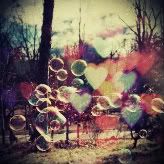
The moment I saw the video of Theo Jansen in Creative Thinking Skills Class, I was flummoxed and at the same time wondered what could that huge, gigantic structure that he invented be?
Since 1990, Theo Jansen has been occupied creating new forms of life. Not pollen or seeds but plastic yellow tubesare used as its basic material of this new nature. He made skeletons that are able to walk on the wind, so they don't have to eat. Over times, these skeletons have become increasingly better at surviving the elements such as storms and water and eventually he want to put these animals out in herds on the beaches, so they will live their own lifes. What an interesting idea isn't it?
Development of idea:
He want to make new life. Some might look a bit like crabs or other animals, but that wasn't on purpose, it just because they are the shapes that best survive. These animals have skeletons that can walk on the wind, eat the wind you might say, so they might have a chance to survive in windy places like the beach.
He wrote columns for a newspaper, grew up very close to the beach and when he came up with ideas for the paper he would often walk along it. He get ideas from the environment he is in and it was a place of his youth, which takes him back to looking at ideas in a youthful way. So the idea really just hit him to use tubes for animals.
He has had pieces of the kinetic sculptors for 16 years and they're still very flexible. In evolvement of his idea, he thinks they could really work one day and live even longer. He could put a herd on the beach and they could develop their walking better by sort of passing genetic information from one animal to the other.
Leg system:
Based on his information, in comparison to the wheel, leg is proven to be more efficient on sand.
Disadvantages of wheel-
Wheels have to work their way through the sand and shift relatively more of it as a result.
Advantages of wheel and leg of the strandbeest-
Both do not lurch. For the wheels, their axle is at a constant height , which saves energy. For the leg of the strandbeest, the upper and lower leg parts move relative to one another in such a way that the hip joint remains at a constant height.
Storing the wind:
The stomach consists of recycled plastic bottles containing air that can be pumped up to a high pressure by the wind. This could be done using a variety of bicycle pump, needless to say of plastic tubing. Several of these little pumps are driven by wings up at the front of the animal that flap in the breeze. It takes a few hours, but then the bottles are full. They contain a supply of potential wind. Take off the cap and the wind will emerge from the bottle at high speed.
The trick is to get that untamed wind under control and use it to move the animal. For this, muscles are required. Beach animals have pushing muscles which get longer when told to do so. These consist of a tube containing another that is able to move in and out. There is a rubber ring on the end of the inner tube so that this acts as a piston. When the air runs from the bottles through a small pipe in the tube it pushes the piston outwards and the muscle lengthens. The beach animal's muscle can best be likened to a bone that gets longer. Muscles can open taps to activate other muscles that open other taps, and so on. This creates control centres that can be compared to brains.
The materials used:
The tubes are the tubes that are used to cover electric wiring here in Holland. They're yellow because by law they have to be like that. It's also very cheap, only about 10 cents a meter.
Incredible idea he has. We should take Theo Jansen's talent as an example to inspire us in designing and constructing in the future. =)
Labels: Veronica Tan
